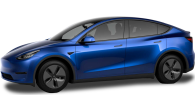Parents looking to reduce their guilt over taxiing loved ones around in petrol-guzzling SUVs can rejoice - here's your chance to potentially win back some green credibility.
The plug-in hybrid version of the high-riding Range Rover Sport is here to provide a more fuel-efficient way to ferry your loved ones around.
For my weekend test I drove the Range Rover Sport 2020 HSE PHEV, which was priced at $166,358, before on roads, and included around $20k of optional extras.
So, does the PHEV provide family hauling practicality mixed with top-notch fuel efficiency? My kids and I had the weekend to find out.
Land Rover Range Rover Sport 2020: SI4 Phev SE (294KW) Hybrid
| Engine Type | Turbo 4, 2.0L |
|---|---|
| Fuel Type | Unleaded Petrol/Electric |
| Fuel Efficiency | 2.8L/100km (combined) |
| Seating | 5 |
| Price From | $68,750 - $78,980 |
Saturday
A day of mostly suburban driving today, with tennis in the morning followed by the end-of-season soccer presentation over lunch, then a trip to the nearby bowling club in the afternoon.
The only exterior marking that distinguishes the Range Rover PHEV from its petrol-powered siblings is the badge at the rear which includes the letter 'e' after P400. Exterior optional extras fitted to our test car included a smart looking set of 21-inch alloy wheels ($3400), and a glossy black roof ($1470) which nicely contrasted the Firenze Red body paint.
Inside, we were greeted by an impressive-looking cabin dressed in high quality materials like the Grand Black wood veneers and the significant amount of ivory-coloured leather used throughout. I'm a fan of the large panoramic sunroof, which has a stylish blind that will automatically close when the car is parked, and will open again to the same position after turning the ignition on.
.jpg)
The HSE comes with a laundry list of top-notch equipment as standard, including an eight-speaker stereo, dual-zone climate control, remote central locking, keyless start, front and rear parking sensors, reversing camera, cruise control, leather trim, electric front seats, sat nav, a powered tailgate, powered everything else, heated folding mirrors and a panoramic roof.
Taking centre stage in the cockpit are the dual display screens stacked on top of each, and which control most of the functions within the car. In fact, Range Rover has seen fit to remove virtually all the buttons, leaving only air flow, temperature dials and a volume knob behind.
I found it relatively easy to navigate through the screens, with the quality and clarity of the screen graphics a stand out providing another nice touch to the premium feel of the cabin.
.jpg)
The premium tech experience extends to the steering wheel, which features a controller that changes its icons depending on the function you are controlling. After a period of use I noted stereo controls were a little too sensitive, though, with even accidental touches triggering a response.
Inexplicably for a car at this price point you are required to shell out an extra $520 for Range Rover's Smartphone Pack in order to get Apple CarPlay and Android Auto.
There are plenty of storage options upfront, with a decent-sized centre bin, two cupholders and large storage bin located in the dash above the glove box. My kids in the back made good use of another two cupholders and a small bin in the centre armrest.
There are pockets in the doors but they're not large enough to fit bottles. As you'd expect for an SUV of this size, passenger space is plentiful front and rear with good leg and headroom throughout.
The battery pushes up the boot floor by about five centimetres, removing almost 100 litres of carrying capacity and adding close to 300kg of weight.
With the rear seats down, boot capacity increases to a massive 1600 litres. It's worth noting the bag containing the charging cord is sizeable and also takes up space back there.
Sunday
Our day included a combination of city and suburban driving, kicking off with a trip to the local supermarket followed by a picnic at the park.
The headline for this SUV is its powertrain, which sees a 2.0-litre, four-cylinder petrol engine (212kW) working in tandem with an electric motor (105kW) powered by a 13.1kWh lithium-ion battery. The idea is the electric motor and combustion engine work in seamless harmony together to drive all four wheels.
Charging will take about over nine hours from a domestic circuit (AC240 10A socket), but you'll have to buy the accessory charging cable ($130) for the privilege.
Charging is a task best undertaken in the garage overnight whereby next morning you will have around 49km of EV driving range.
This Range Rover Sport PHEV is no slouch either, with a claimed zero-100km/h time of 6.3 seconds. No diesel variant can match it.
In combustion-engine mode, the eight-speed automatic transmission moves through the gears smoothly, but I detected some hesitation at lower speeds around town. There was some unpredictability around the way the hybrid mode operated, though.
.jpg)
And then there's EV mode. Apparently the PHEV has about 49km of electric-only range and I was looking forward to testing this. Unfortunately at no point over the weekend was I able to manage this feat. Even when I’d selected electric only mode the petrol engine would interrupt, particularly during hill climbs, but even under modest acceleration.
Once the battery is depleted its nigh on impossible to recharge while on the go, even using regenerative braking. The whole EV driving experience was rather haphazard and unrewarding and left me wondering why I bothered to take the time to charge it.
Range Rover claims combined-cycle consumption at 2.8 litres/100km, which is overly optimistic for this two-tonne-plus chariot. This was confirmed after a weekend of suburban and city driving using a combination of EV and hybrid modes, which resulted in the trip computer displaying 9.0 litres/100km.
.jpg)
The Range Rover Sport PHEV comes with six airbags, ABS, stability and traction controls, brake assist, reversing camera, forward-collision warning, forward AEB and lane departure warning. An extra $11,848 buys you the Driver Assist Pack (included with our test car) which brings blind spot assist, 360 parking aid, adaptive cruise control, high speed emergency braking and rear traffic monitor to the party.
There are also three top tether points for child restraints across the back seat, with ISOFIX anchors on the two outer positions.
The Range Rover Sport is yet to be awarded a safety rating by ANCAP.
.jpg)
Verdict
There's something quite enticing about being transported around the burbs in style and comfort.
What's not to like? From a practicality, handling and ride perspective, I'd say very little. But if you're looking for serious savings at the fuel pump then I'd suggest keeping your trips in this plug-in electric hybrid SUV short.
Pricing Guides

Range and Specs
EV Specs for Land Rover Range Rover Sport 2020
| Drivetrain | Plug-in hybrid |
|---|---|
| Battery capacity | 13.1kWh |
| Battery type | Lithium-ion |
| Electric range | 49km (WTLP) |
| Plug type | Type 2 |
| AC charge rate | 7.4kW |
| Electric motor output | 105kW |
| Combustion engine output | 221kW |
| Combined output | 297kW/640Nm |
| Petrol efficiency | 2.8 litres/100km |

.jpg)
.jpg)
.jpg)
.jpg)
.jpg)
.jpg)
.jpg)
.jpg)
.jpg)
.jpg)
.jpg)
.jpg)
.jpg)
.jpg)
.jpg)
.jpg)
.jpg)
.jpg)






















.png)









.jpg)
.jpg)

.jpg)
.jpg)
